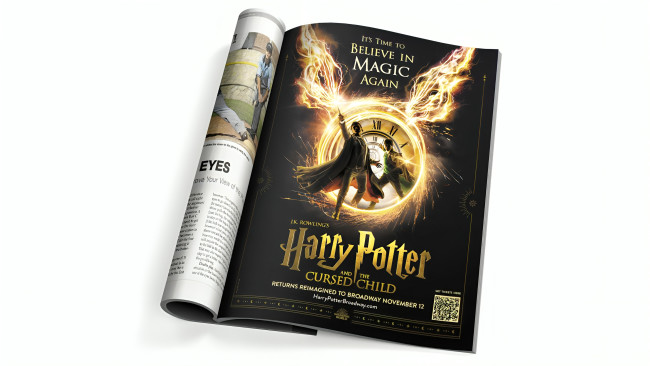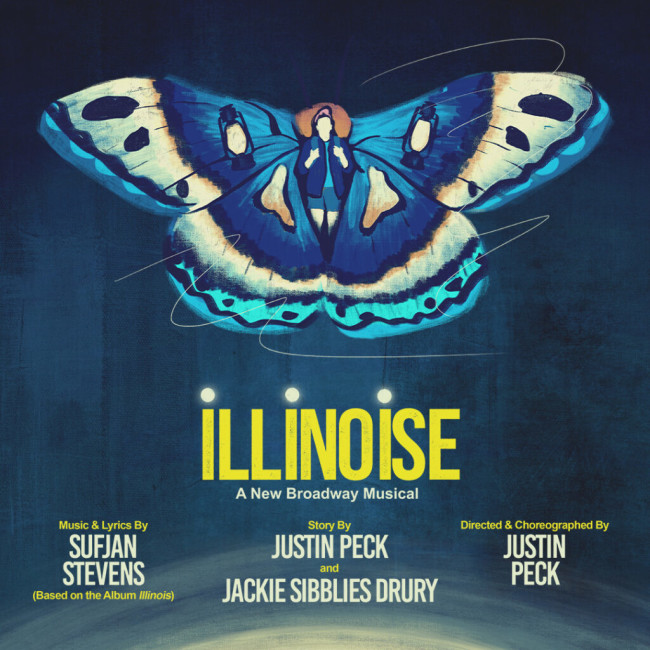“Promoting a Broadway show is like threading a needle that changes shape while you attempt to thread it.”
These words belong to Robert Mathias, AKA NYC Art Director and Designer. Having experienced firsthand the fierce competition and unique challenges of promoting shows on Broadway, Robert Mathias shares the biggest lessons he has learned in creating standout campaigns that captivate audiences and drive ticket sales.
Because in the end, art and all, it’s all about selling tickets and getting people on those seats.
Who Is Robert Mathias?
Robert Mathis is a CLIO award-winning Art Director and Designer at entertainment-based full-service agency AKA, with a track record of creating visual identities for brands from the ground up. He spent a decade in New York City as an in-house Art Director for globally recognized brands such as A&E, History Channel, and Lifetime.
While clients often have specific demands and targets, as a creative agency that specifically works in the arts, culture, and entertainment industries, AKA NYC knows quite well which is the main goal for most clients.
“You start by assuming across the board that any client’s number one goal is to sell tickets, whether it’s for Broadway, film, museums, or attractions.
The theater in particular is an industry built on enormous stakes; you have to secure funding for something that has no guarantee it will resonate with an audience, and then convince said audience that a show is a worthwhile expenditure of time and resources. Shows fail all the time for a myriad of reasons.
Our clients are navigating this side of the landscape, and you have to have empathy for that; otherwise, you’ll never get anywhere,” Robert told me.
Robert also highlights a misconception that their work is art, but it’s not. They have skills similar to artists, but they solve real problems for clients with specific goals. Their focus is on what will make people want to engage, like buying a ticket or planning a trip to New York, he explains.
“While we share a love for arts and expression with our clients, our work isn’t mindlessly cynical. Designing an icon for a musical to make it feel like an unmissable event, like the Phantom mask or Cosette illustration for Les Mis, involves artistic elements but serves a purpose.
In our industry, you can creatively break norms, like featuring a famous person in unconventional ways, and clients often love it. Our ultimate goal is to sell tickets, with many objectives supporting that,” he adds.
Robert says that engaging audiences requires understanding how they’ll interact with what you create. For theater, knowing where the art will be displayed—like Playbills, merchandise, and theater fronts—is vital.
When Robert is creating art, logos, and similar items, the key questions are:
- Will audiences want to take pictures with it after traveling halfway across the country to see the show?
- Will they frame it on their wall?
- Will they want it on a mug?
He says that seeing someone with a poster you designed reminds you of its importance. Arts, culture, and experiences are temporal, as he puts it, so the objects they create help people remember them.
“That’s how you build a meaningful interaction: you think of what you’re making as not an advertisement, but a gift,” he concludes.
Navigating the Complexities of Broadway Marketing
AKA NYC has done extensive work marketing entertainment organizations on Broadway. Having experienced firsthand the fierce competition and unique challenges of standing out on Broadway, he shares the key obstacles AKA NYC faced when promoting Broadway shows.
We often begin work before a show is fully realized or has even begun rehearsals, so sometimes, we’re just working off a snapshot of where the show is in development.
Sometimes you get lucky, and the show manages to be exactly or nearly the thing it was conceived as, but often it changes quite a bit, and you’ve got to be ready to start all over again when it does,” Robert explains.

He says that If a show evolves significantly, they must adapt and start over.
Sudden opportunities, like a theater opening, can also prompt a rapid shift in plans. The true nature of the show emerges only after audience feedback, requiring humility and the willingness to revise strategies multiple times, he adds.
The Creative Journey Behind “Illinoise” Campaign
Robert shared with me their project on “Illinoise” explaining that initially, AKA NYC created temporary art for the Broadway musical that referenced the original Sufjan Stevens album for its pre-Broadway run.
However, once the show evolved into a unique musical-ballet-concert hybrid, they needed a fresh approach.
“We went back in to get to the heart of what this thing had become rather than how its life originally began, which was an incredibly daunting challenge. From the moment they decided to go to Broadway to the first on-sale date, we had about two weeks to rethink the whole campaign. The best way to utilize that time was to do the old-fashioned dartboard; try a bunch of things and see what sticks,” he explains.
After numerous drafts and two scrapped campaigns, they finally hit the mark with an illustrated moth, inspired by the performers’ wardrobe, with their character Henry at its center.

This illustration encapsulated the show’s vast, indescribable experience, he adds.
They supplemented this icon with dynamic imagery, music footage, and abstract elements to capture the show’s energy.
The campaign featured bold typography, color-washed production photos, and lo-fi, scanned icons for social graphics and posters. The result was a successful, cohesive campaign that conveyed the show’s unique and expansive nature.
“Everything naturally found its purpose, even when we weren’t aware of it,” he concludes.
Getting People Excited About Theater Again
This is the solution, according to Robert:
“Look, I could give you a flowery answer like “craft a memorable, audience-tailored experience blah blah blah,” but the truth is, just make a show look as good and unmissable as possible. That’s it. I hold the door open to the theater – it’s up to you if you want to walk in.”
Sometimes, a show has an amazing trailer, great key art, and a massive media buy, but your friend tells you they didn’t like it, so you decide not to go, he explains.
As per him, there are many factors you can influence but can’t control: Tony voters’ decisions, critics’ reviews, casting changes, passionate Broadway fans’ opinions, ticket prices, upcoming holidays, or even the weather.
“Or maybe I’m wrong, and as soon as two cocktails in New York cost more than a balcony seat, people will flock to the theater like it’s the Eras tour,” he concludes.
READ NEXT:
Social Media Advertising Cost Guide
This post was originally published on this site be sure to check out more of their content





